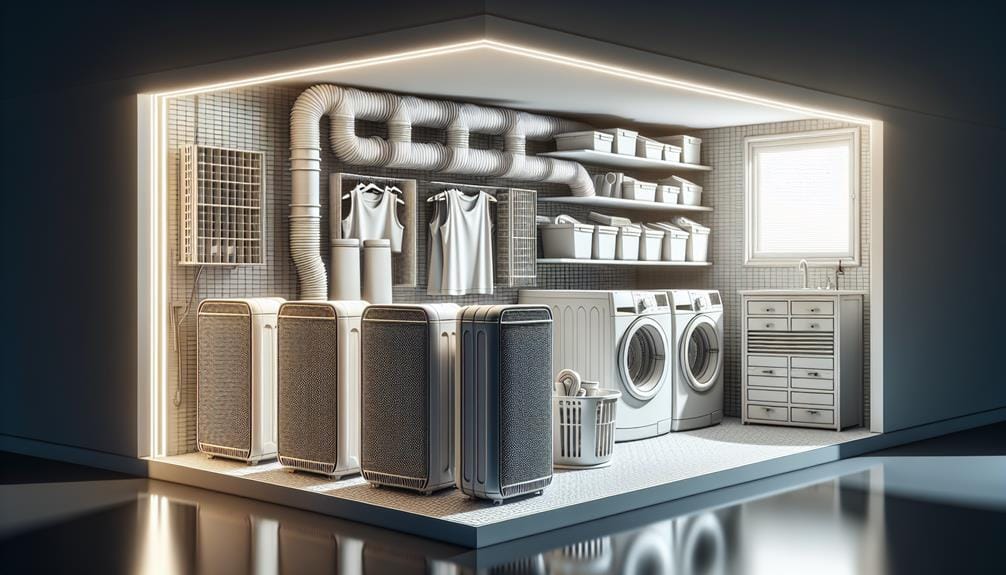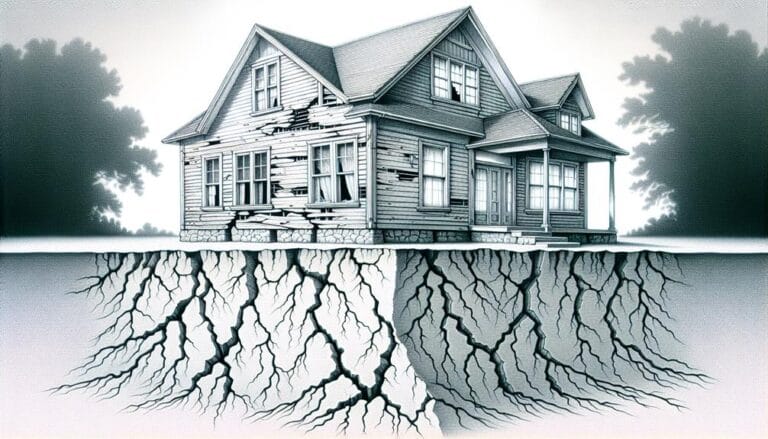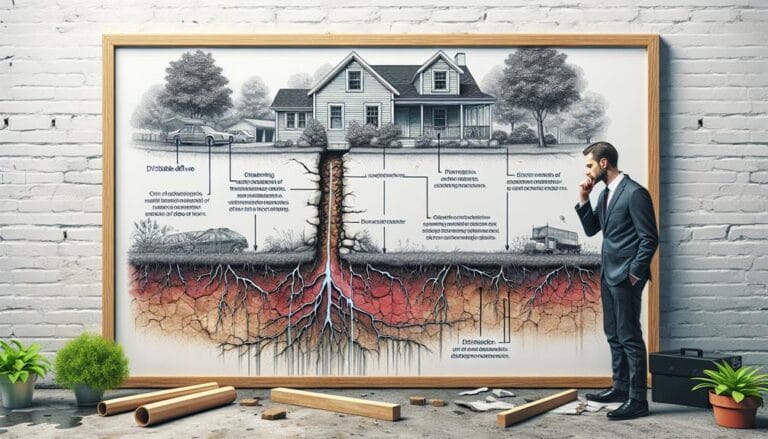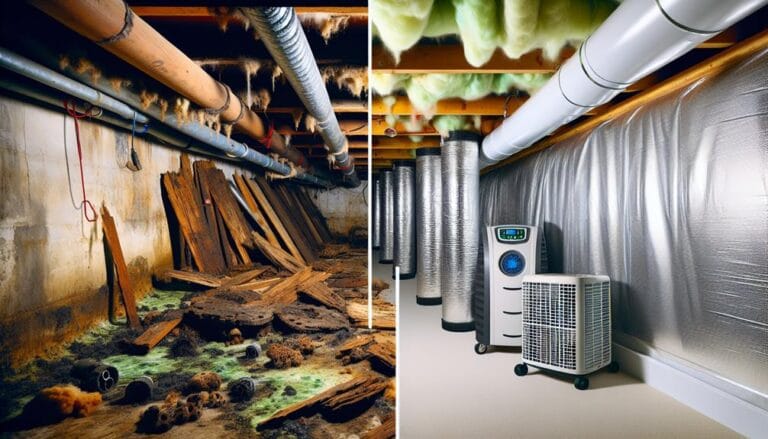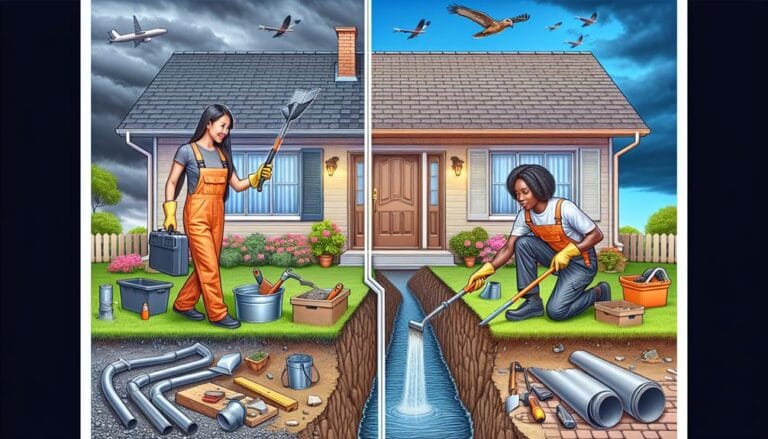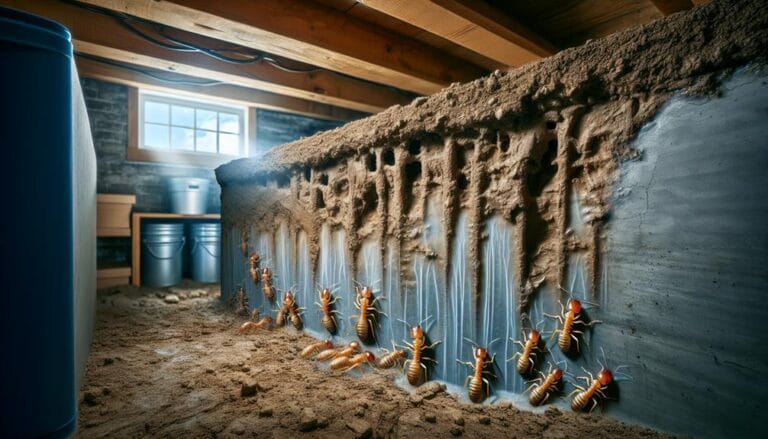Drying Your Home From the Bottom Up
Drying our homes from the bottom up is essential for maintaining a healthy and structurally sound living environment. The crawl space, often overlooked, can lead to major issues like moisture buildup, mold growth, pest infestations, and poor indoor air quality if not properly addressed. Not only do these problems affect our home's integrity, but they also pose significant health risks. By understanding and tackling these issues head on, we can guarantee a cleaner, healthier home environment. Let's start exploring the key steps to transform our crawl space and reap the many benefits that come with it.
Key Takeaways
- Prevent Moisture Accumulation: Ensure proper waterproofing and drainage to prevent water seepage into the foundation and crawl space.
- Insulate and Ventilate Crawl Space: Install effective insulation and mechanical ventilation systems to control humidity and regulate temperatures.
- Encapsulate Crawl Space: Use dehumidifiers and heavy-duty vapor barriers to seal out water and maintain a clean environment.
- Regularly Inspect and Maintain: Regularly inspect for signs of water damage, mold, and pest infestation, and maintain proper drainage and grading.
Common Crawl Space Problems
As homeowners, we often overlook the crawl space beneath our feet, but it's an essential area that can significantly impact our home's health and comfort. Crawl spaces can be a source of many issues, including moisture problems, pests, and poor air quality. During construction, condensation can occur under the subfloor, leading to mold and moisture issues if not addressed properly. Moisture in the crawl space can also come from external sources like standing water outside the home or inadequate vapor barriers.
When inspecting our crawl spaces, we often find that the moisture barrier is not doing its job. Water can accumulate under the barrier if there are any gaps or if the soil is contaminated. This is why proper crawl space inspections are fundamental to identifying and addressing these issues. Confirming that the vapor barrier installation is done correctly is also essential in minimizing moisture problems. It is not enough to simply postpone dealing with the issue; active measures are needed to guarantee a dry and healthy crawl space.
Mold and Pest Removal
While addressing moisture issues in our crawl space, we also need to tackle another significant aspect: removing mold and pests, which thrive in these surfaces. Mold grows in damp environments and can pose serious health risks if left untreated. To effectively tackle mold, we must focus on mold remediation. This involves identifying the sources of moisture and eliminating them to prevent further growth. Once the environment is dry, we can then safely remove the mold without spreading it.
In addition to mold, crawl spaces often attract pests like termites, rodents, and insects. These pests can cause significant damage to our home's structure and compromise our health. As a result, it's vital to incorporate pest control measures into our crawl space maintenance. This can include sealing all entry points, removing food sources, and installing barriers to prevent future infestations. By addressing both mold and pest issues, we can guarantee a cleaner, healthier, and more structurally sound home.
The Importance of Waterproofing
By ensuring that our home's foundation is waterproof, we can effectively eliminate a significant source of moisture that attracts both mold and pests, enhancing the overall viability of our crawl space cleanup efforts. This waterproofing process involves the use of specific materials that create an impermeable barrier against water infiltration, safeguarding our home's structural integrity and preventing damage from water and moisture.
Here are three key aspects of waterproofing that highlight its importance:
- Protection Against Water Damage: Prevents water from seeping into the foundation and walls, which reduces the risk of structural damage and property loss.
- Reduction of Health Risks: Generates a healthier living environment by stopping mold and mildew growth, which can lead to respiratory issues and allergies.
- Enhanced Property Value: Boosts our home's value by ensuring a dry, functional living space that can be utilized for various purposes, such as recreation or storage.
Crawl Space Encapsulation Methods
To guarantee a complete cleaning and dehumidification of our crawl space, we need to employ effective encapsulation methods to seal out water and moisture. Encapsulation involves treating the crawl space walls with specialized radiant reflective insulation and covering the dirt or gravel floor with a heavy-duty vapor barrier. This facilitates a significant reduction in humidity levels and prevents moisture from entering the space. By sealing the crawl space, we can control humidity and create an environment inhospitable to mold and pests.
The encapsulation process includes installing a vapor barrier, which is a thick, reinforced polyethylene sheet that covers the entire floor. This prevents soil moisture from entering the space and reduces humidity. To further enhance humidity control, we can also install a dehumidifier to regulate the air and prevent moisture from accumulating. By encapsulating our crawl space, we can effectively maintain a dry and clean environment underneath our home, ultimately contributing to a healthier and more comfortable living space above.
Insulation and Ventilation Techniques
After encapsulating our crawl space to create a dry and stable environment, we can focus on optimizing its insulation and ventilation to guarantee energy efficiency and a more comfortable living space. By guaranteeing effective insulation, we can maintain consistent temperatures, reduce heat transfer, and minimize energy loss. This can be achieved by selecting suitable insulation materials like fiberglass batts, foam boards, or spray foam, depending on the specific requirements of our crawl space.
Key Techniques for Insulation and Ventilation:
- Proper Installation: Confirm that insulation materials are installed correctly to maximize their effectiveness. This might involve placing them in specific patterns or using specialized tools to confirm seamless coverage.
- Mechanical Ventilation: Implement ventilation systems that introduce stale air removal and fresh air injection. This helps in maintaining a consistent air quality and further enhancing energy efficiency.
- Air Sealing: Seal all gaps and cracks to prevent air leaks, which can compromise the insulation's performance and create energy losses.
Concrete Floor Repair Options
Before addressing the concrete floor repair options, it is vital to prioritize proper ventilation and insulation techniques to optimize energy efficiency and interior comfort. A well-insulated and ventilated space markedly reduces the risk of moisture accumulation, which can exacerbate floor damage.
When it comes to concrete floor repair, there are several options available. One effective method is applying epoxy coatings. These coatings are highly resistant to further damage from environmental moisture as well as heavy foot traffic. Additionally, they enhance the floor's aesthetic appeal. For uneven floors, floor leveling is a key step to guarantee a smooth and even surface. This process involves applying a self-leveling compound that hardens to form a sturdy foundation for the concrete.
Radon and Moisture Mitigation
We guarantee our home remains cozy and structurally sound by prioritizing radon and moisture mitigation to prevent long-term damage. Radon, a radioactive gas that can accumulate in basements, is a silent threat to our health. Moisture, on the other hand, can seep into the concrete, causing cracks and weakening the foundation. To tackle these issues, we employ specific strategies.
Here are the key steps we take:
- Radon Testing: We start by testing our basement for radon levels. This gives us a baseline measurement to work with and helps us determine the most effective mitigation method.
- Installing Moisture Barriers: We use dimpled membranes or other moisture barriers to prevent water from seeping into the concrete. These barriers are essential in minimizing the risk of cracks and structural issues.
- Active Soil Depressurization: If radon levels are high, we opt for active soil depressurization systems, which involve installing pipes and fans to extract radon from beneath the foundation and vent it outside.
Proper Drainage and Grading
Radon and moisture mitigation are key to preventing structural issues, so now we focus on guaranteeing proper drainage and grading to safeguard our home from water damage. A vital step in this process is setting up effective drainage systems. One such system involves using horizontal pipes placed beneath the foundation that direct water away from the home. This configuration helps to prevent water accumulation around the house that could lead to seepage and structural damage.
Additionally, proper grading techniques are also important. By confirming the ground around our house slopes away from the foundation, we prevent water from pooling near the walls. This, in turn, reduces the risk of seepage and subsequent water damage. It is essential to inspect our property regularly to verify that grading remains correct, as over time, settling and erosion can affect the slope.
Health Benefits of Dry Homes
Health Benefits of Dry Homes
Protecting our homes from water damage by guaranteeing proper drainage and grading methods helps guarantee a healthier living environment, especially for those who already suffer from respiratory issues. By keeping the foundation and surrounding areas dry, we can prevent moisture-related problems inside our homes.
Dry homes are extremely beneficial for our health. Here are some key advantages:
Improving Health
- Air Quality Enhancement: Dry homes reduce the concentration of moisture in the air, which decreases the likelihood of mold growth and the propagation of airborne pathogens.
- Allergy Reduction: Dry conditions inhibit the proliferation of allergens such as dust mites, which thrive in humid environments.
- Minimized Asthma Triggers: By reducing moisture levels, we can minimize the growth of mold and mildew that trigger asthmatic reactions.
Frequently Asked Questions
What Is the Best Material for Crawl Space Vapor Barriers?
"We prefer polyethylene plastic sheeting and reinforced polyethylene, which offer durability, waterproofing, and mold resistance. For high-traffic areas, a puncture-proof vapor barrier or a foamboard insulation with a 12 mil vapor barrier are excellent choices."
Can I Install a Vapor Barrier Myself, or Do I Need a Professional?
Since every 5th home deals with moisture issues in the crawlspace, we weigh the options. For a simple installation, we can DIY using retrieval methods like the 'Polyguard' termite barrier; otherwise, a professional assessment is key to guarantee a smooth, non-punctured installation.
How Long Does It Typically Take to Encapsulate a Crawl Space?
Typically, encapsulating a crawl space can take a few days to a week, depending on preparation and moisture control measures.
Are There Specific Dehumidifiers Designed for Crawl Space Use?
Yes, there are specific dehumidifiers designed for crawl space use. These crawl space dehumidifiers are essential moisture control solutions that effectively manage humidity levels to prevent mold and structural damage.
Does a Correctly Installed Vapor Barrier Reduce Utility Bills?
Does a Correctly Installed Vapor Barrier Reduce Utility Bills?
Yes, we believe that a correctly installed vapor barrier can markedly reduce utility bills by enhancing energy efficiency through improved moisture control, making our homes more comfortable and cost-effective.

